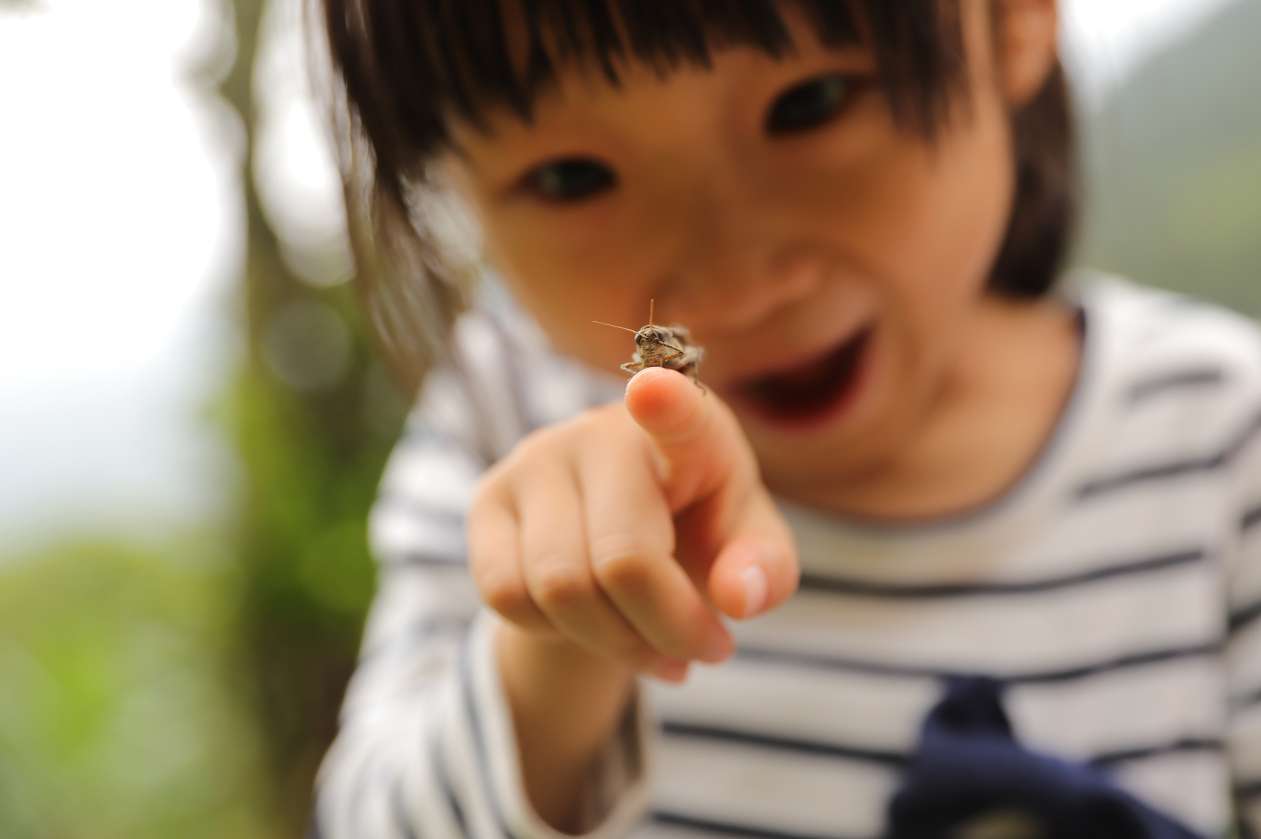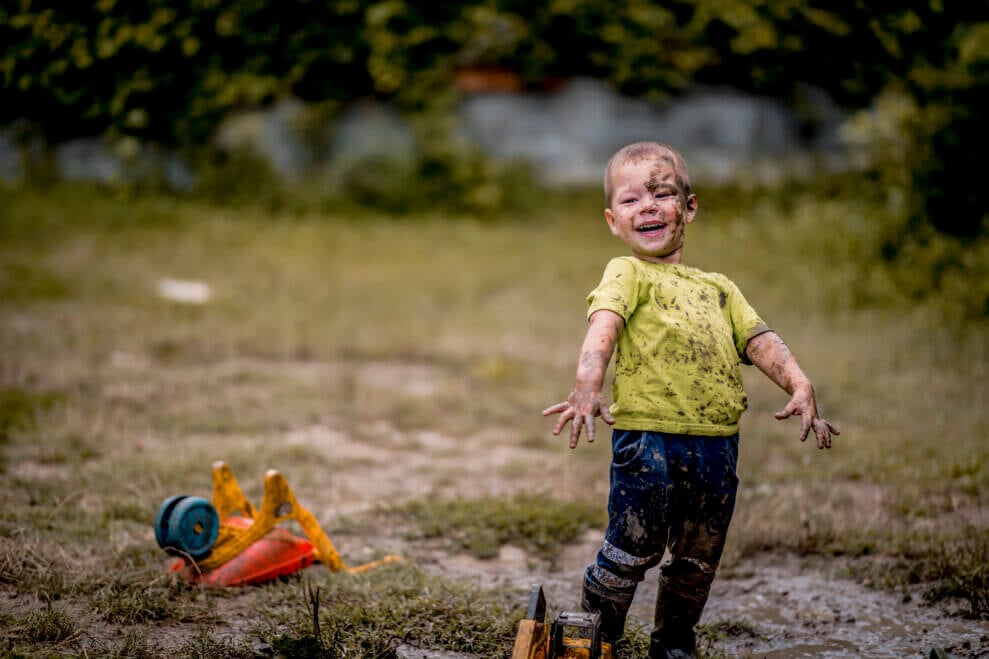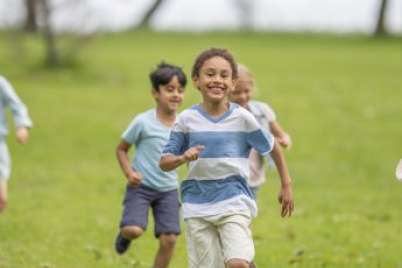
Spring activities scavenger hunt for kids
I don’t like to pick favourites, but if I was forced to, it would be… spring! The warmer weather, blooming flowers, and outdoor spring celebrations bring so much excitement after the long cold Canadian winter. I know that spring has truly arrived when I find a trail of coats, socks, and shoes shed across the front yard. My children are always thrilled to embrace spring and I’m more than happy to join them. If you and your child are looking for a reason to head outside and enjoy spring then look no further. I’ve compiled a fun spring activities scavenger hunt just for you.
Spring activities scavenger hunt printable
Download and print this fun spring scavenger hunt so that you have it on hand the next time you and your child go outside to visit a park, nature trail, or your backyard. There are 25 separate outdoor activities on this printable. Your child can do them all one day or spread them over a period of time. You could even cut the scavenger hunt into individual squares, place them in a jar, and have your child pick a random activity for each day. Have fun with this activity!
Reasons and resources for each activity
Below are detailed explanations for each activity along with suggestions for making each activity easier or more challenging for your child as needed.
1. Squat to find a sprout
Violets, crocuses, tulips, and snowdrops poke through the cold soil during the earliest days of spring. It can be easy to overlook spring sprouts without getting close to the ground. Encourage your child to squat down and search the ground with their eyes and hands to find something green. Not only does practicing a flat-footed squat improve your child’s flexibility, strength, coordination, and balance, but finding a sprout is an exciting sign that spring has arrived.
2. Jump over a puddle
Jumping is a key movement skill that develops around the age of two and continues to develop beyond the age of five. At first, toddlers learn how to do a double-footed jump straight up and down. Over the next few years, young children learn how to jump forwards and jump over and off objects. Practicing jumping skills from an early age helps to develop muscle and bone strength, coordination, and balance. If jumping over a puddle is too tricky for your child, have them jump into a puddle. To learn more about the benefits of puddle play, check out: Why puddle play is so great for kids.

3. Pedal your legs in the air
Springtime is a great time for a bike ride. No bike? No problem. For this activity, no bike is needed. Have your child lay on her back and pedal her legs. Air cycling is great for strengthening abdominal muscles, hip flexors, and coordination. Pair this activity with a song like “I Have a Little Bicycle” or “Violette à bicyclette” (French song) for added fun.
4. Find three bugs
Spring is a buzzy season for bugs! Bees collect pollen and nectar for their hives, ladybugs wake up and feast on aphids, and ants search for food to build their colonies. Have your child search for three different types of bugs. Look for bugs around flowers, under rocks, or hiding in cracks and crevices. Searching for bugs stimulates your child’s sense of sight and hearing while getting them to move around.
5. Wiggle like a worm
Worms wiggle through soil eating organic matter and leaving nutrient dense casings (worm poop) behind. Finding a worm isn’t always easy, unless it’s raining outside. Spring rains bring worms to the surface. Nobody quite knows why, but it’s a great time to get a close look at these fascinating creatures. For this activity, have your child wiggle like a worm and if he’s extra keen, see if he can find a worm in the soil.
6. Dance on the grass
Time to celebrate spring time! Sing spring tunes (“Mary Had a Little Lamb” or “It’s Raining, It’s Pouring”) or play some dance party jams on a device and dance with your child on the grass. Dancing is a full body workout that’s great for improving coordination and creativity.
7. Spot three different birds
From February to mid-April, birds migrate from their warm wintering grounds to the north to gorge on insects and raise their young. See if your child can spot and identify three different types of spring birds. Birds are easier to spot around bird feeders and bodies of water. If you can’t see any birds, have your child listen for bird calls and songs. One of my kids’ favourite spring birds is the red-winged blackbird. Does your child have a favourite spring bird?
8. Collect 10 small rocks
Now that the snow has melted, it’s time to go rock hounding. Have your child collect 10 small rocks. Picking up small objects develops fine motor skills, which helps with developing the muscles necessary for writing. Make sure you hang on to those 10 rocks for a fun game (details under “Collect four sticks”).
9. Hop like a frog
Frogs croaking is a sign that spring has sprung! Those little hoppers can sure cause a ruckus when they get together, just like happy, active kids! For this prompt, have your child hop like a frog. Hopping is a more advanced movement skill because it requires forward motion. If your child is young, have her hop like a frog without moving forward.
10. Look for a tree with flowers
Flowering trees paint nature with a firework of springtime colour. The magnificent magnolia, colourful crabapple, and lovely lilac are just a few springtime flowering trees that are worth pointing out to your child during the spring season. What kind of flowering tree did your child spot? What did the blooms smell like?
11. Spin around five times
Have you ever noticed that children love to spin? My toddler loves to spin round and round until she falls down. Spinning is fun but it’s also an important activity for sensory and motor development. It helps kids develop balance, coordination, and even concentration. For this activity, challenge your child to see how fast she can spin—chances are she will want to spin more than just five times.
12. Stretch like a rainbow
Stretching helps children develop body awareness, flexibility and coordination. Here are several different ways to stretch like a rainbow:
- Do a rainbow pose. Have your child stand or kneel with one arm relaxed at his side and the other arm arched over his head.
- Do a down dog pose. Have your child start on her hands and knees. Get her to plant her toes into the ground, lift her hips to the sky, and straighten her legs.
- Do a bridge pose. Start on by getting your child to lay on her back. Get her to bend her knees, plant her feet on the ground, and lift her hips up.
13. Stomp in the mud
Stomping in the mud is a fun and satisfying activity for kids. The benefits of playing in the mud far outweigh the laundry afterwards. Mud play develops kids’ senses, imagination, movements skills, and immune system! Here’s a great article about why kids need to play with mud, tires, fire, and junk and some ideas for how to make a DIY mud kitchen in your backyard.

14. Smell three flowers
Stop and smell the flowers! I’m a huge advocate of letting kids get close to nature. Not only are nature-connected kids healthier and happier but they often grow up into adults that want to take care of the environment. For this prompt, encourage your child to smell three different kinds of flowers. Which one smells the nicest? Which smells the worst?
15. Find something soft
A feather, moss, or a caterpillar are just a few soft things that you can find in the spring. This prompt encourages your child to use their sense of touch to explore the world around them.
16. Collect four sticks
Sticks are great items for imaginary play, which has many physical and mental health benefits for your child. A stick can be a wand, guitar, sword, or pencil. Sticks can also be made into games. Once your child has collected four sticks and 10 rocks, lay the four sticks on the ground in a grid pattern and divide the rocks into two groups of five. Now play a game of tic-tac-toe!
17. Skip on a sidewalk
Step hop, step hop, step hop! Skipping is a movement skill that develops around the age of four. If your child hasn’t learned how to skip yet, start with hopping on one foot and then the other. Hopping on one leg will help build strength, balance, and coordination, which are all needed for skipping.
18.Tiptoe like a raccoon
Raccoons are stealthy and very intelligent nocturnal animals. I have a little pond on my property and it took me months to figure out who was stealing the beautiful goldfish from my pond. It was a sneaky raccoon! For this prompt, have your child sneak like a raccoon by walking quietly on the balls on her feet, also called tiptoeing. Walking on tiptoes builds balance and strength in the feet, ankles, and legs.
19. Look under a big rock
There’s a whole world of critters that live under rocks and logs. Ants, pillbugs, beetles, slugs, millipedes, and earwigs are just a few interesting invertebrates hiding under there. Encourage your child to push over a large rock and have a peek. Have a look under the rock and then push it back into place when you’re done. This activity also gets your child practice his pushing movement skills, which is good for strengthening arms and legs.
20. Reach up to the sun
During spring, the days get longer and the sun feels warmer. For this prompt, have your child stand tall, reach his arms up to the sun, and say “Hello sun!”

21. Roll like an egg
Eggs are a sign of spring! Birds are laying eggs in their nests and stores are stocking up on chocolatey eggs for spring celebrations. For this activity encourage your child to roll on the grass like an egg. If your child is older, she can try to somersault. Rolling is a great activity for developing your child’s vestibular system, which is important for balance and spatial orientation.
22. Crawl like a turtle
In the spring, turtles crawl onto warm rocks and logs to sun themselves. Crawling like a turtle is a fun activity that builds coordination and gross motor skills. Experiment with different kinds of crawls like a traditional crawl (hands and knees), an army crawl, a bear crawl, or a crab crawl. Which type of crawl would a turtle use?
23. Take 10 steps backwards
Walking backwards is a fun and important movement skill. Not only does walking backwards strengthen leg muscles but it builds coordination, balance, and spatial awareness. Typically kids will start taking steps backwards between the ages of two and three. For older kids, challenge them to take 10 fast steps or skip backwards!
24. Find four yellow things
Yellow is a common colour during spring, especially while dandelions are blooming. Have your child find four different yellow things outside. These can be man-made and natural things. What did your child find?
25. Waddle like a duck
Experimenting with different animal movements is a fun way to work on physical literacy skills with your child. To waddle (walk) like a duck, have your child squat down and take one step then another forward on his feet. This movement builds calf strength, hip flexibility, and endurance.
Most importantly, have fun!
I hope you and your child enjoy exploring spring with this spring activities scavenger hunt. Don’t forget to share this resource with a friend, or better yet invite a friend to join you. If you have any questions or comments, feel free to leave them in the comments section below.







Sharing this on our community park’s Facebook page!
Amazing! Thank you so much, Linda!